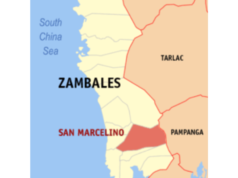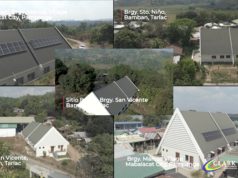BAGUIO. DAGUPAN. Tacloban. Iloilo. Cagayan de Oro. Cebu. Zamboanga. Naga. Laoag. Batangas. Davao…
And – topping them all – Angeles. That is in the fi eld of least vulnerability to climate change effects, as determined in a study of the World Wide Fund for Nature (WWF) and the Bank of Philippines Islands Foundation
(BPIF).
“Climate exposure, socioeconomic sensitivities, and adaptive capacities are melded to generate scores which show each city’s climate vulnerability. A chronic recommendation is to climate-proof local infrastructure by moving coastal roads and communities to high ground, improving community drainage systems and investing in natural solutions like mangrove forests to parry inbound storms.”
So noted WWF-Philippines Vice Chair and CEO Jose Ma. Lorenzo Tan during a presentation at the Widus Convention Center in Clark only last Tuesday. Ensconced inland and rising over a hundred meters above sea level, Angeles City, by accident of geography, has neither storm surges nor tsunamis to fear at the threat of every storm.
Plus factors there for Angeles City to make any comparison with Metro Manila all the more odious – to the latter’s utter disadvantage. Which Tan himself highlighted with his call on government to decentralize the capital
region to the point of transferring government executive departments to the provinces, with, presumably, lesser vulnerability to the impact of climate change than Metro Manila which already “represents a concentrated risk.”
It can only be Angeles City – megamized with its immediate suburbia of Mabalacat City, Porac and Magalang – as destination point of any hegira from Metro Manila. He did not say it, but Tan did not have to.
Suffice was his call on the government to decide to “finally fully develop” the Clark International Airport as premier international gateway, in the wake of projections that the Ninoy Aquino International Airport has already reached beyond its lifespan.
“Why build a new airport when there is an existing one?” Tan asked, in obvious reference to various plans of government and business taipans preferring over Clark some large reclamation projects in Sangley and in Bulacan to ground the Philippines new premier international airport.
Sheer squandering of time and resources, an exercise both futile and fatal, given the storm surges, liquefaction and subsidence inherent in seaboard areas. As one natural law holds: Water reclaims its own. In actuality, the findings in the WWF-BPIF study are not newly revealed truths.
For so long, in its campaign for the full development of the Clark airport, the Pinoy Gumising Ka Movement has always harped on the high elevation of Clark – along with Angeles City, naturally – its distance from bodies of water, its flat expanse and strategic location – at the heart of Central Luzon, serving as gateway to the North; at the hub of the Asia- Pacific region.
Metro Manila’s congestive constriction, its below-sea-level elevation – the apt word maybe submersion – show the starkest comparison for such an easy, sound decision. It’s actually a nobrainer situation. Which, would have augured, if not agreed, well with the state of mind obtaining in this government.
Alas, it did not. And from the way the currents of events are, it is not so, it will not be so. At least until 2016.
The actualization of the potentials of Clark International Airport, I mean. But we can salvage some consolation here. Our faith in the supremacy of Clark over any other airport, extant and planned, as premier international gateway; our vision of a future – so bright, you have to wear sunglasses, to steal some wag’s blurb – for Angeles City and its environs have been given their weight in gold with the stamp of the WWF-BPIF.
So, we just have to keep up with our Clark advocacy. Dare to struggle, dare to win. As the activism of our past inflamed us. Finally, as much a signal honor as a daunting challenge to Angeles City – to its government as well as to its people – is that ranking of least vulnerability to climate change effects.
With the increasing migration and its equally increasing social cost to the city – from garbage to ghettoes, from the exhaustion of natural resources – water, foremost – to environmental pollution, not to mention unemployment, poverty and crime, Angeles can easily lose that rating of least vulnerability. In that sense, vigilant action is not just the call of the hour, it has to be the way of life for the city.
We cannot anymore afford to squander through indifference, neglect or abuse, what nature has so generously bestowed upon this city.




